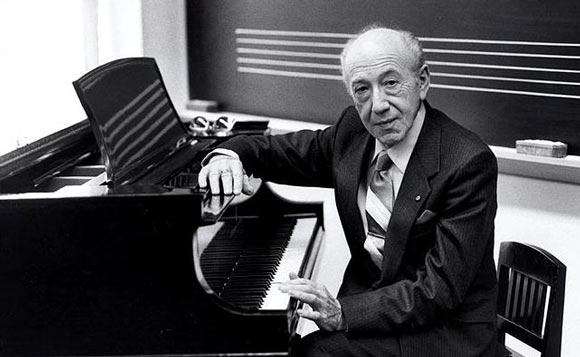
David Leo Diamond was an American Composer who was highly decorated for his works.
David Diamond was born on July 9, 1915 in the Rochester district of the State of New York. As a child, Diamond would often experiment with the violin. By the age of seven, he came up with his own musical notation. When his family moved to Cleveland, Ohio in 1927, a Swiss Musician by the name of Andre de Ribaupierre soon discovered Diamond’s rare talent. At that time, Andre was teaching at the Institute of Music in Cleveland, and he was Diamond’s first teacher of music theory. Diamond then continued his studies with Bernard Rogers at the Eastman School of Music, where he also studied the violin with Effie Knauss. Diamond also studied with Paul Boepple and Roger Sessions on scholarship from the New Music School. Perhaps the most important part of his student life came in 1937, when he joined the famous Fontainebleau institute. Here, Diamond received the blessings of the legendary Igor Stravinsky, through which he won Juilliard Publication Award in 1937 for one of his works called ‘Psalm for Orchestra’. The Psalm, together with another work of his called “The Elegy for Brass, Percussion and Harps” propelled the career of the young Diamond towards unprecedented heights.
Diamond’s extraordinary talent helped him win a total of three Guggenheim Fellowships. In the 1940s he went on to write a number of classics, including the String Quartet No.2 in 1943, the Two Solo Piano Concerto in 1942, the Chaconne for Violin and Piano in 1948, the Sonata for Piano in 1947, and the String Quartet No.3 in 1946.
In the 1950s, He also tried his luck with musical themes for radio. In 1950 he wrote the theme for CBS’s show “Hear it now” and its television counterpart “See it now”. Diamond then went to Europe to serve as a Fulbright professor, he remained in Florence, Italy until 1965, after which he returned to the United States.
Diamond was a highly prolific composer; he composed a total of twenty orchestra works, twenty nine chamber works, fourteen piano works, five vocal works, and two wind ensembles. All of this is besides the nine concerto works that he wrote also.
Many of Diamond’s famous pieces were performed by celebrated orchestras during his life. The New York Philharmonic often performed many of his pieces; their favorite seemed to be his Symphony No.5. The Seattle Symphony and the New York Chamber Orchestra also performed and even recorded many of his works. Diamond also won a number of awards during his lifetime. His String Quartet No.8 won the Rheta Sosland Chamber Music Prize, together with the incredibly famous Stravinsky ASCAP award. It also won him a place on the National Institute of Chamber and Arts.
His success could be gauged by the fact that he won plenty of honors and awards at a time when it was socially unacceptable to be homosexual, as Diamond himself was. Even so, he went on to win the William Schuman Lifetime Achievement Award in 1986, the Gold Medal of the American Academy of Arts and Letters in 1991, and the Edward MacDowell Gold Medal for lifetime achievement in 1991.
David Diamond died of heart failure on June 13, 2005 in Rochester, New York.